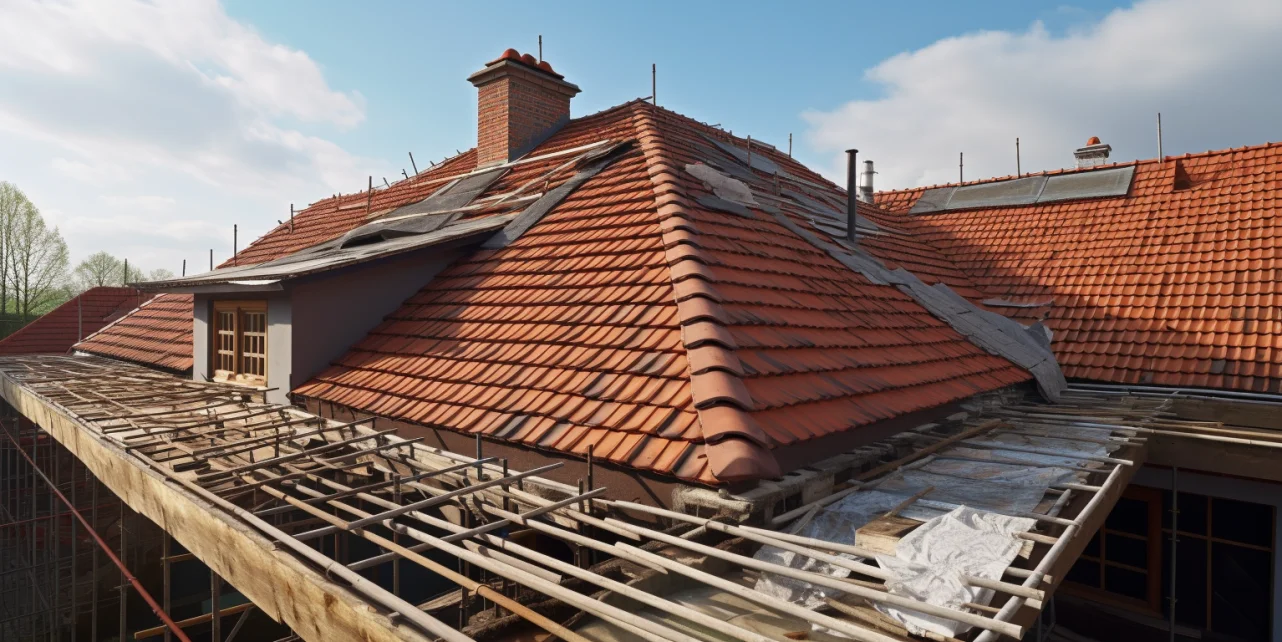Key Takeaways
The roofing invoice helps protect roofers from nonpayment and misunderstandings. It records billing information including fees, materials, and other charges. It also serves as an important legal document, listing the services that a roofer has provided to a client. This helps ensure roofers get paid for their services and that clients are aware of the services they have received.
Providing a roofing invoice also helps ensure customer satisfaction. The invoice helps clients remember what services have been provided and the prices they have been charged. This, in turn, makes them more likely to be satisfied with the roofing services they have received.
Understanding the fees listed on a roofing invoice also helps clients budget more effectively. They can prepare for upcoming invoices and manage their finances more efficiently. This also contributes to their overall satisfaction with the roofing services they have received.
A roofing invoice is an important tool. It serves as an agreement between roofers and clients, ensuring that roofers are paid for their services and that clients are satisfied. It provides a record of services and fees, helping clients plan their budgets. This makes the roofing invoice an important document for both sides when engaging in roofing services.
Clarification of Services Rendered and Fees Incurred
A roofing invoice should clearly detail services rendered and fees incurred. It should include all prices for materials and labor. This helps ensure clients fully understand what services have been paid for. It also provides a record for clients when negotiating with roofers and other contractors.
The invoice should clearly list what specific services have been performed. This could include inspecting existing roofing materials, repairing structural damage, or installing new materials. The invoice should also detail the materials used in the job, making it easier for clients to confirm which parts were used.
When a job requires multiple visits from the roofer, the invoice should specify the total fees for the entire job as well as the fees for each separate visit. That way, the client can clearly understand the cost difference between each stage of the job.
The roofing invoice should also itemize any discounts or additional services provided. This helps ensure clients know the true cost of the job and that they are not charged for services they did not receive.
The roofing invoice should be easy to read and understand. It should clearly identify the services rendered and fees incurred. This helps ensure both roofers and clients have a good understanding of what was provided and how much it cost.
Legal Documentation and Protection from Nonpayment
A roofing invoice serves as a legal document for both the roofer and the client. It clearly lists the charges for services and materials, along with any discounts or additional fees. This helps both sides of the transaction understand what services were provided and what fees were incurred.
Preparation and signing of the roofing invoice also helps protect the roofer from nonpayment. It serves as a binding agreement between the two parties and can be used to resolve any disagreements over payment.
For the client, the roofing invoice helps protect them from misunderstandings over the services provided and the fees incurred. It provides a clear breakdown of the services that were performed and the fees that were charged. This helps clients determine the total amount they owe for roofing services and ensures they are paying the right fees.
The roofing invoice also serves as a record for future reference. The roofer can refer back to the invoice in the event of a dispute or misunderstanding. This helps both parties resolve any disputes or misunderstandings in a timely and efficient manner.
The roofing invoice provides both roofers and clients with important legal documentation and protection from nonpayment. It clearly records the services provided and the fees incurred, helping both sides of the transaction understand what services were performed. This helps ensure both sides receive the services they contracted for without any misunderstandings.
Improved Budgeting and Preplanning
A roofing invoice can be a powerful tool for budgeting and preplanning. It provides homeowners with an accurate record of the total cost of their roofing services. This can be used to plan current and future expenses more effectively.
When a homeowner understands what services have been performed and the fees associated with them, they can better plan their budget. They can plan for upcoming payments and allocate funds more efficiently. This helps ensure they are not overspending on roofing services.
The roofing invoice also records details of the services provided and the materials used. This can help homeowners estimate future expenses for repairs or replacements. By understanding which materials were used and what the associated costs are, homeowners can make an informed decision about buying additional materials in the future.
A roofing invoice helps ensure homeowners stay within their budget. It provides an accurate breakdown of the services and fees, helping them understand what part of their budget is being allocated to roofing services. This helps them control their overall spending and better manage their finances.
The roofing invoice also serves as an agreement between the homeowner and roofer. It details the services that will be provided, the fees associated with them, and the payment schedule. This helps ensure roofers get paid on time and that homeowners are paying the right fees for the services they receive.
To sum up, the roofing invoice helps homeowners more efficiently manage their finances. It provides an accurate record of services and fees, helping them budget more effectively and plan for upcoming expenses. In addition, it serves as an agreement between roofers and homeowners, helping to ensure roofers are paid and homeowners are paying the right fees.
Clear Communication of Services Rendered and Fees Incurred
Clear communication between roofers and their clients is important to ensure mutual understanding of the services provided and the fees incurred. The roofing invoice serves as an important document in this process, listing every service provided, materials used, and fee charged. This helps both sides of the transaction understand what services were performed and what fees were incurred.
The roofing invoice should clearly report the services provided and the fees associated with them. It should include a breakdown of labor fees, materials costs, and other expenses. This helps customers understand exactly what services were performed and how much they paid for them.
It should also clearly list any discounts or additional services provided. This helps ensure customers understand the total cost of the job and that they are not paying for services they did not receive.
In addition, the roofing invoice should clearly state the payment schedule for the job. This helps ensure roofers get paid on time and that customers understand when to make payments.
The roofing invoice is an important document for both roofers and their clients. It serves as an agreement between the two parties, listing the services provided and the fees incurred. It helps ensure roofers are paid on time and that customers understand exactly what services they were provided and how much they are paying for them. Clear communication of services rendered and fees incurred is essential to provide an understanding between the two parties. The roofing invoice helps ensure this process runs smoothly and both sides of the transaction are satisfied.
Contribution to Client Satisfaction
A roofing invoice helps ensure client satisfaction. It records all the services and materials that a roofer has provided to a client. This helps clients understand exactly what services were provided and the fees incurred. By understanding their fees, clients can more easily budget for future roofing services.
The roofing invoice also serves as a legal document that outlines the services provided and the fees incurred. By clearly detailing these items, misunderstandings between roofers and clients can be avoided. This helps ensure roofers get paid and that clients receive the services they contracted for.
The roofing invoice also serves as a record for clients when negotiating contracts with roofers or other contractors. Clients can review the services listed on the invoice and verify that they received all of the services they were promised.
The roofing invoice also helps ensure prompt payment. It clearly outlines the payment schedule, helping clients understand when payment is due and how much. This helps clients avoid late payments and ensure they are meeting their financial obligations to roofers.
Clear communication of services rendered and fees incurred can also contribute to client satisfaction. The roofing invoice should clearly detail all the services provided and the fees incurred. This helps clients understand exactly what services were performed and the amount of fees for each service.
Overall, the roofing invoice helps clients understand the services they received and the fees due. It serves as an important legal document and record of the job. They also help ensure roofers are paid and that clients are satisfied with their roofing services. It is an important tool in contributing to client satisfaction.
Key Takeaways
The roofing invoice is an important legal document that helps protect both roofers and clients. It clearly lists the services provided, materials used, and fees charged, helping clients understand exactly what services they have received and the fees they have incurred. This serves both sides of the transaction, providing protection from nonpayment and helping clients budget and plan more efficiently. In addition, it contributes to client satisfaction by providing a clear agreement between roofers and clients and properly documenting the services that were performed. By understanding the services rendered and fees incurred, clients can communicate more effectively with roofers and plan their finances more efficiently. The roofing invoice serves as a crucial tool in protecting both roofers and clients and contributing to client satisfaction.



